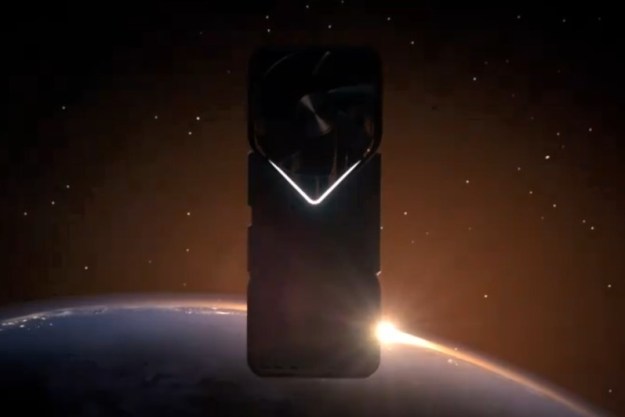Nvidia’s upcoming GeForce RTX 40 series of GPUs could possibly more than double the teraflops (TFLOPS) count of the 3090 Ti, and may even exceed 100 TFLOPS.
Reliable tipster Greymon55, who has provided several rumors pertaining to Nvidia’s next-gen graphics cards, has reaffirmed his stance regarding the graphical compute performance (FP32) of Lovelace video cards.
If lovelace gets up to 2.5GHz, you'll get about 90t of FP32, and 3090ti is just 40t.😬
— Greymon55 (@greymon55) January 25, 2022
He tweeted that “if Lovelace gets up to 2.5 GHz, you’ll get about 90t of FP32.” Previously, he referred to the possibility of the GeForce RTX 40 series offering between 85 to 92 TFLOPS in FP32 in November 2021. For reference, Lovelace is believed to be Nvidia’s codename for its next-generation GPUs.
As pointed out by NotebookCheck, TFLOPS (tera (trillion) floating operations per second) has increasingly become a commonly used metric to determine how powerful a graphics card is in general. As opposed to gigahertz (GHz), which determines a processor’s clock speed, TFLOP measures a computer’s performance.
Nvidia’s Ampere architecture allowed the RTX 3090 to be powered by 35.58 TFLOPS in FP32 (single-precision floating-point format), while the highly anticipated GeForce RTX 3090 Ti GPU is said to deliver 40 TFLOPS.
An RTX 4090 video card (based on the AD102 GPU) offering 90 TFLOPS would therefore be 2.5 times more than the RTX 3090’s teraflops count. NotebookCheck highlights how an upgraded
With such a high TFLOPS count, it reinforces a previous rumor that the
Greymon55 also pointed out that Lovelace video cards would offer “double performance” of the GeForce RTX 3090. When considering the rumored technical specifications, that statement could very well become a reality — in addition to 18,432 CUDA cores, the
So far I know the next gen GPU has not been delayed, in fact it is not far, only more than half a year is not it?😁
— Greymon55 (@greymon55) January 19, 2022
As for the GeForce RTX 3090 Ti, the
Nvidia is reportedly spending several billion dollars to use TSMC’s 5nm process node required for GeForce RTX 40 GPUs.
Editors' Recommendations
- Nvidia RTX 50-series graphics cards: news, release date, price, and more
- Nvidia just made GeForce Now so much better
- Why I’m feeling hopeful about Nvidia’s RTX 50-series GPUs
- Here’s how AMD counters Nvidia’s big RTX Super launch
- RTX 4080 Super vs. RTX 4070 Ti Super vs. RTX 4070 Super: Nvidia’s new GPUs, compared




